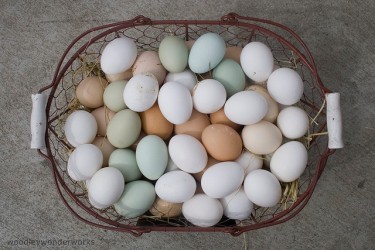Are you hungry for information about launching your food-service small business? While there’s a lot of shared information to get started across all industries,
the food industry poses unique opportunities and questions. One of the
most common we see is how to calculate the cost of food.
Here’s one approach from small-business expert Sam Ashe-Edmunds, who dishes out food-cost calculations
into nine steps to help ensure that you’ll be able to keep a consistent
menu, please customers and remain profitable.
Here’s what he has to
say:
Step 1: Pick a dish to start and list all of its
ingredients – even condiments and garnishes. You’ll want to make sure
that the portion for each dish is the same so that it always costs the same.
Step 2: Calculate the cost of each ingredient. Take a
head of lettuce, for example. If it costs 75 cents and you get 30
leaves, the lettuce cost for a dish that includes one lettuce
leaf would be about 2.5 cents. Ashe-Edmunds reminds us to include a
proportion of any expenses directly related to purchasing foods, such as
delivery fees or interest.
Step 3: Add up the costs of all the ingredients for the dish, but don’t include costs for labor or actually serving the dish.
Step 4: To start figuring out if you’ve priced the
meal right, divide the menu price by the food cost to calculate the
percentage of the price that comes from food. If you charge $10 for a
meal for which food costs are $5, then your food cost is 50 percent.
Step 5: Now, you’ll want to determine overhead cost per meal, which includes everything not related
to food that’s required to run your restaurant. This includes things
such as labor, rent, marketing, taxes, etc. So, consider what it will
cost to run your restaurant on a daily basis – then divide that number
by the number of customers you think you’ll serve every day. If your
overhead is $1,000 per day and you have 200 customers each day, your
overhead per person is $5.
TIP: Keep employee meals
and food theft in this overhead figure as well, because they’re not
included as direct costs to serve a meal but can’t be left out.
Step 6: Using your overhead costs as a guide, decide
your ideal food-cost percentage. If you charge $10 for a meal and your
overhead cost is $6, then your food costs can’t be more than $4 to break
even. Want a $2 profit per meal? Then you’ll have to charge $12 for
that particular dish.
Step 7: Take a look at the prices listed in your
menu to figure out if they’ll cover your overhead and food costs – and
if you’ll be able to make a profit. So if you’ve calculated an ideal
food-cost percentage of 20 percent and a dish uses $4 of ingredients,
you can’t sell that dish for any less than $20.
Step 8: You may need to calculate different
food-cost percentages for different services or items, such as a
breakfast menu versus dinner menu, because of different requirements –
some less, some more – to satisfy each dish.
Step 9: Finally, examine your sales by item to
determine if your food-cost percentages are adequate to keep your
restaurant in business. If it turns out you’re selling at primarily a
low cost, you might need to raise prices (or lower food costs) to be
profitable.
TIP: Get a more complete
picture of your food costs by checking out total food costs per service
and dividing them by total sales. Then you won’t have to calculate the
actual cost of each menu item.








